Get in Touch
General
(508) 921-4600
Email Sales
Email Support
UEI Europe Office
+49 40 63698136
Email EU Sales
Visit this page for local offices and distributors.
Model-Based Design Tutorial & Reference Guide
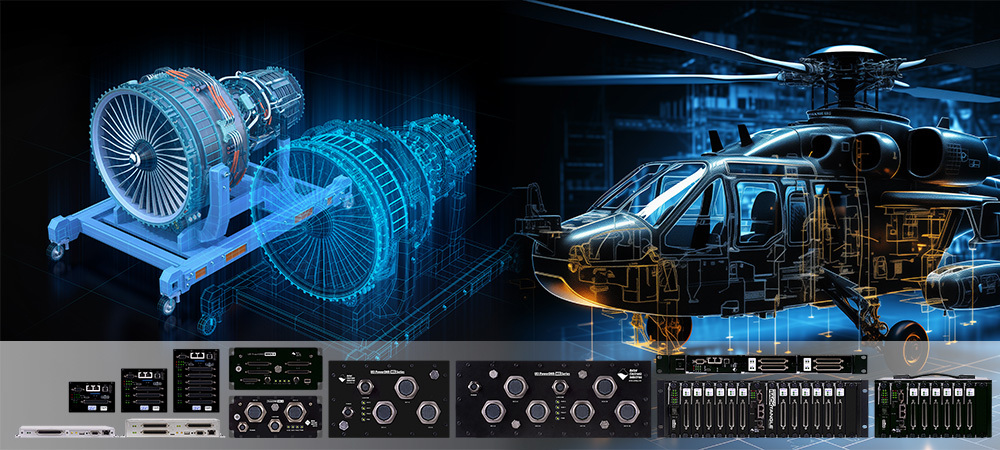
Model-Based Design (MBD) is an engineering approach that uses models to develop and simulate systems before physical implementation. It's widely used in industries like aerospace, defense, space, automotive, and robotics to streamline development, reduce costs, and improve efficiency.
At its core, MBD involves:
- Creating models that represent a system's behavior.
- Simulating and testing (verifying) these models to identify issues early in the design process.
- Automatically generating code from the models to accelerate deployment.
- Deployment using generated code and re-use of the verification suite.
- Continuous iteration, ensuring that design improvements are made before physical prototyping.
Engineers are looking for maximum re-use of hardware and software to reduce time to market. The MBD approach helps engineers visualize complex systems, predict performance, and refine designs before committing to hardware.
If you've ever heard of tools like MATLAB/Simulink™, those are commonly used for MBD.
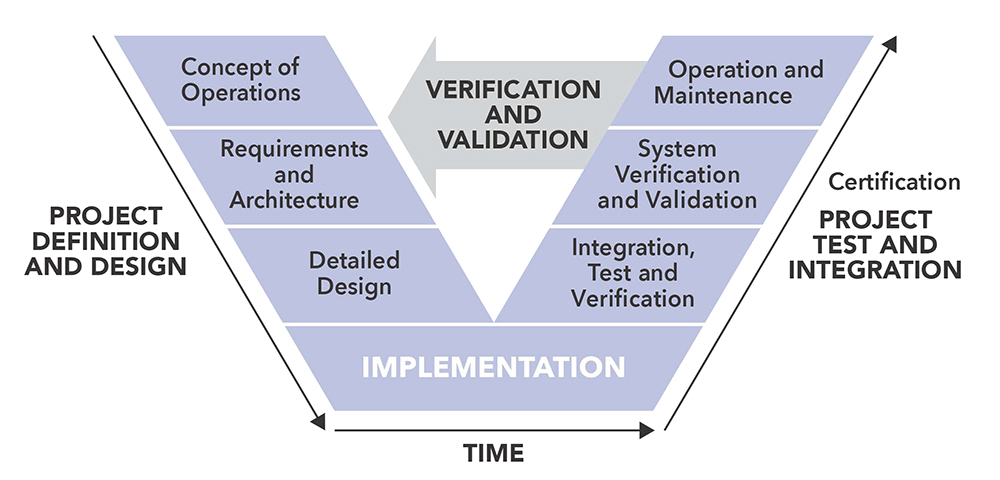
The workflow typically involves defining system components, modeling and validating them, and refining algorithms before generating embedded software.
CASE (Computer-Aided Software Engineering)
Simulink is an ideal choice for a powerful upper-level CASE tool that excels in MBD by providing engineers with an intuitive, block-diagram environment for system modeling and simulation. Its strength lies in enabling rapid prototyping, real-time testing, and automated code generation, which streamline the development of complex control systems and embedded software. By integrating design, simulation, and verification into a single platform, Simulink reduces development time and minimizes costly late-stage errors. It’s a go-to choice for industries like automotive, aerospace, and robotics, where precision and efficiency are critical.
The holy grail is to use upper-level CASE tools, such as Simulink, to create verifiable models of control systems and then reuse the model to generate code that can be applied directly to the deployed system. Any test cases used for verification can also be reused to verify the deployed system. UEI has taken this a step further—achieving 100% reuse of the model, including code generation and hardware, from simulation all the way to deployment!
MODEL-BASED DESIGN IN AEROSPACE & DEFENSE APPLICATIONS
MBD plays a crucial role in aerospace and defense by enabling engineers to develop, test, and optimize complex systems with greater efficiency and accuracy. Here’s how it’s used:
| Flight Control Systems MBD allows engineers to design and simulate flight control algorithms before deploying them in real aircraft. Using tools like MATLAB/Simulink can model aerodynamics, sensor behavior, and actuator responses, ensuring stability and performance under various conditions. |
|
| Autonomous Systems In defense applications, MBD helps develop autonomous systems like UAV (Unmanned Aerial Vehicles), UAS (Unmanned Aircraft Systems), UGV (Unmanned Ground Vehicles) and MUS (Maritime Unmanned Systems). Engineers can test navigation algorithms, collision avoidance strategies, and mission planning logic in simulations before real-world deployment. |
|
| Hardware-in-the-Loop (HIL) Testing HIL testing integrates real hardware components with virtual models. This is especially useful for avionics systems, where software and hardware interactions must be validated under simulated flight conditions before installation in aircraft or military systems. |
|
| Cybersecurity & Embedded Systems Modern aerospace and defense systems rely heavily on embedded software, making cybersecurity crucial. MBD helps model software vulnerabilities and test security measures in simulated environments to strengthen defenses against cyber threats. |
MBD significantly accelerates development timelines, reduces costs, and enhances safety in aerospace and defense.
BENEFITS OF MODEL-BASED DESIGN
MBD offers numerous advantages across various industries, especially in aerospace, automotive, and embedded systems. Here are some key benefits:
| Faster Development & Reduced Time-to-Market By using models to simulate and verify systems early in the design phase, engineers can identify issues before physical implementation, speeding up development and reducing costly redesigns. UEI has simulation hardware to assist in the validation and verification of the models |
|
| Improved Accuracy & Reliability MBD allows engineers to create highly detailed mathematical models, ensuring precise system behavior predictions. This leads to better reliability and fewer errors in real-world deployment. |
|
| Automated Code Generation Engineers can automatically generate production-ready code from models, eliminating manual coding errors and improving software efficiency. This is particularly beneficial for embedded systems and control applications. UEI’s hardware is a target for the generated code allowing the OEM to verify the functionality on real hardware with real interfaces. |
|
| Cost Savings By catching design flaws early and reducing the need for expensive physical prototypes, MBD significantly lowers development costs. Simulation-based testing also cuts down on resources spent on physical trials. |
|
| Enhanced Collaboration Since models are visual and data-driven, different engineering teams—software, mechanical, electrical—can collaborate effectively. MBD bridges gaps between disciplines, ensuring smoother system integration. |
|
| Regulatory Compliance & Verification MBD facilitates rigorous testing and verification, ensuring that designs meet industry standards and safety requirements. This is crucial for aerospace and automotive applications where compliance is mandatory. |
|
| Scalability & Future Adaptability Systems designed using MBD can be scaled or modified easily by updating the models, making future iterations and enhancements seamless. |
These advantages make MBD a powerful approach for developing complex systems efficiently and reliably.
REAL-WORLD EXAMPLES OF MBD
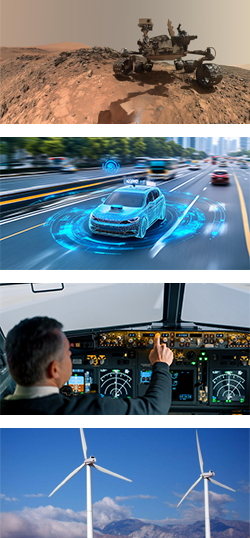
Aerospace: NASA’s Mars Rover
NASA uses MBD extensively in space exploration. For the Mars rovers, engineers model the vehicle's mobility, sensor interactions, and control algorithms to ensure smooth operation in harsh conditions. Simulations allow them to test navigation strategies without needing a physical prototype on Earth.
Automotive: Autonomous Vehicles
Companies developing self-driving cars, such as Tesla and Waymo, use MBD to model vehicle dynamics, sensor fusion, and AI-driven decision-making. Engineers create virtual environments where autonomous systems can learn, adapt, and be tested under different driving conditions before being deployed on real roads.
Defense: Flight Simulators for Pilot Training
Military forces use MBD to develop highly realistic flight simulators that replicate real-world conditions. These models allow pilots to train without requiring actual aircraft, saving costs and improving safety.
Renewable Energy: Wind Turbine Optimization
Wind turbine manufacturers use MBD to simulate airflow patterns, blade efficiency, and electrical generation. By testing different configurations virtually, they can optimize performance and reduce material costs.
UEI AND MBD
UEI offer a wide range of hardware and I/O to support MBD applications that use Simulink and LabVIEW. With our solutions, you can load your model directly onto hardware for testing on the lab or on the ground and then take that same hardware to test in live scenarios.
UEI MBD Supported Applications:
Zero-Emission Electric Vehicles
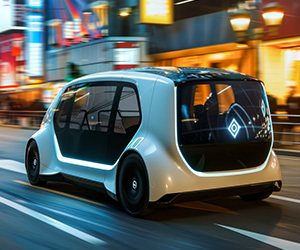
A manufacturer of zero-emission autonomous vehicles required compact DAQ and control systems for safety data collection, testing, and simulation. The vehicles, equipped with cameras, radar, and lidar for a 270-degree road view, relied on UEI Cube I/O systems to relay sensor data to the drive control computer. In the lab, UEI RACKtangle systems supported MBD, serving as controllers and data loggers for simulators. UEI's flexible I/O solutions ensured smooth integration from lab to simulator to deployment, optimizing operational efficiency.
Marine Turbine Gas Engine Monitoring
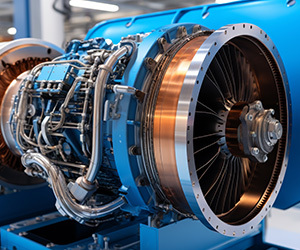
A leading manufacturer of high-performance power systems for the aerospace, defense, marine, and energy industries was developing a high-power, aero-derived marine gas turbine for naval vessels. They needed a rugged and flexible engine monitoring unit (EMU) for their entire fleet. UEI’s flexible and rugged I/O systems were selected because they could run Simulink models both in the lab and in deployed environments.
Wrap Up: UEI Hardware is an ideal choice for MBD

From the V-model framework to HIL testing and beyond, UEI solutions ensure that MBD tests perform reliably in the face of complex, dynamic challenges. With UEI being a key player in I/O system development, the engineering and development industry can confidently navigate this dynamic landscape, bringing groundbreaking innovations to reality faster and more effectively.
-----------
Additional Resources:
Video: How UEI Benefits Your HIL Applications
Video Playlist: UEI & Simulink
